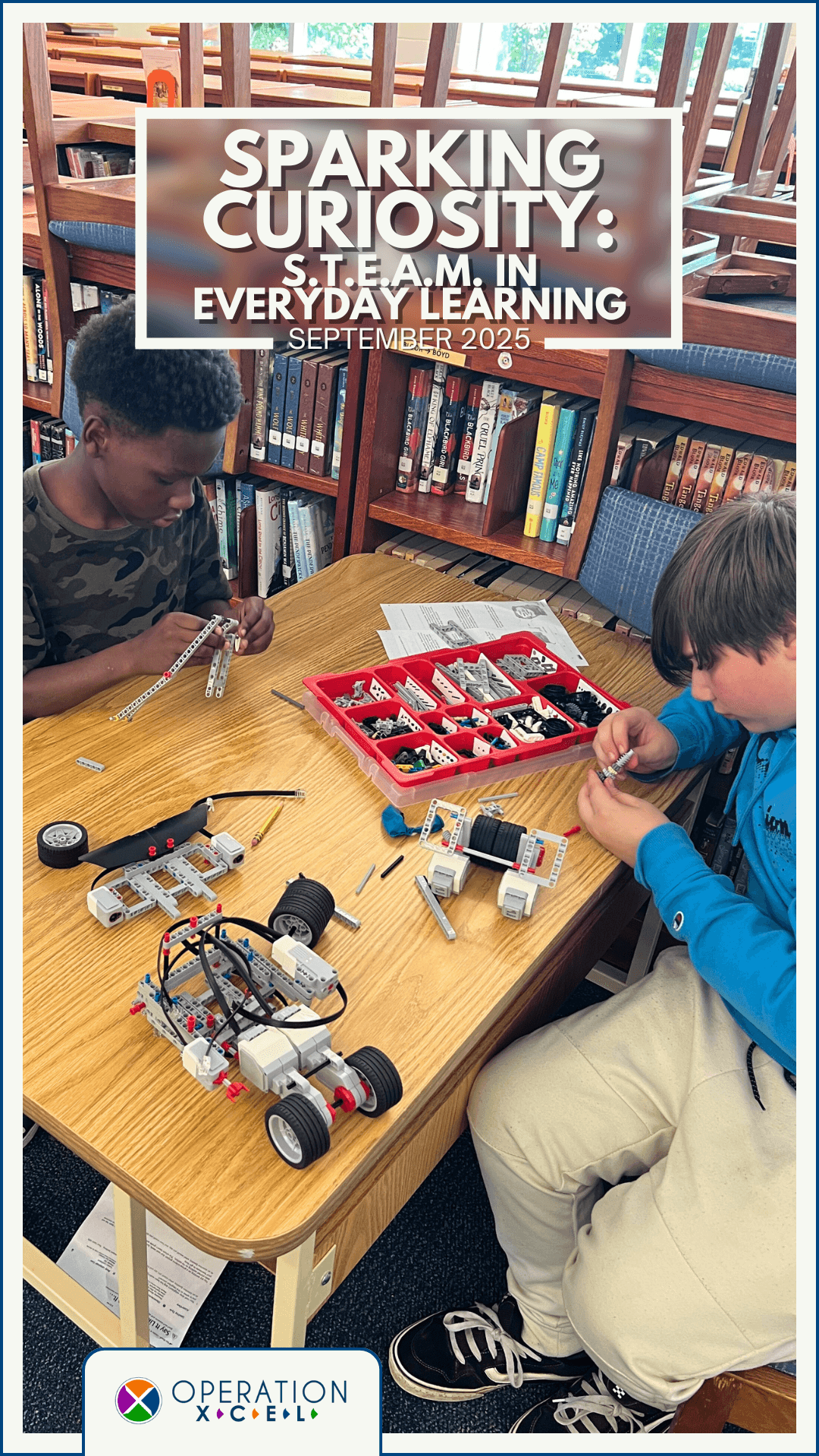
Introduction: In a world driven by innovation, preparing the next generation with the skills to think critically, solve complex problems, and innovate is more important than ever. That's where STEAM comes in—Science, Technology, Engineering, Art, and Math. While these subjects might sound intimidating, they are the foundation of hands-on learning, and you don't need a lab or a specialized degree to bring them to life.
By weaving STEAM concepts into daily routines, families and teachers can transform learning from a rigid subject into a playful, creative adventure.
The Power of Hands-On Learning
STEAM is about more than just a list of subjects; it's a mindset. It encourages curiosity and teaches children to ask "why" and "how." When kids engage in hands-on projects, they aren't just memorizing facts—they are actively building, experimenting, and problem-solving. Research has consistently shown that this approach is more effective at developing skills than traditional, passive learning (Mertens & Custer, 2020).
This process naturally develops vital skills identified as critical for 21st-century success, including:
- Critical Thinking: Analyzing problems and making informed decisions.
- Problem-Solving: Finding creative solutions when things don't go as planned.
- Collaboration: Working together with others toward a common goal.
- Creativity: Using imagination to invent and design (National Research Council, 2012).
The integration of art into STEM to form STEAM is a pedagogical approach that recognizes the essential role of creativity and design in innovation. It is not just about making subjects more visually appealing; it's about fostering the kind of imaginative thinking that drives scientific discovery and technological advancement (Henriksen, 2017).
STEAM at Home: Simple Activities with Big Impact
You don't need a high-tech setup to get started. Many STEAM activities can be done with items you already have around the house.
- Kitchen Chemistry: Turn your kitchen into a science lab! Bake cookies to learn about chemical reactions and measuring. Make a volcano using baking soda and vinegar to demonstrate a classic acid-base reaction.
- Nature Walks: Go on a "bug hunt" or collect leaves. Use a magnifying glass to observe the details. This is a great way to introduce biology and botany.
- Building Challenges: Provide blocks, LEGOs, or even cardboard boxes and tape. Challenge your child to build the tallest tower that can withstand a small fan (a great lesson in engineering and structural integrity).
- DIY Art Bots: Attach a small battery-powered motor to a plastic cup. Add markers to the bottom of the cup, and turn it on. The cup will wobble and "draw" unique patterns, blending art with simple mechanics.
STEAM in the Classroom: Project Ideas
Teachers can create an environment where STEAM is part of the curriculum, not an addition to it.
- Design a Marble Run: Give students common materials like cardboard tubes, tape, and cups. Challenge them to design and build a marble run that makes the marble take a specific amount of time to reach the end. This project combines physics, engineering, and collaboration.
- Build a Water Filter: Using a plastic bottle, charcoal, sand, and pebbles, students can create a simple filter to clean muddy water. This activity is a powerful lesson in environmental science and engineering.
- Code-a-Story: Introduce students to beginner-friendly coding platforms like Scratch or Tynker. They can use code blocks to create their own animated stories or games. This is a fun and interactive way to teach computational thinking and storytelling.
- Art & Geometry: Have students create geometric tessellations using paper cutouts. They can explore how shapes fit together without gaps or overlaps, connecting art and mathematics.
A Real-World Example: Operation Xcel
Organizations like Operation Xcel are building their programming entirely around the STEAM framework, and the results are undeniable. By providing hands-on, engaging projects, students learn more effectively and are better equipped to navigate the challenges of the modern world. This type of learning not only makes them more competitive for future careers but also instills a genuine passion for discovery.
It's this tangible, exciting approach that makes students genuinely excited to return to our after-school and summer programming. They aren't just coming back to a classroom; they're returning to a place where they have a reason to be excited about learning. Our students are equipped with the skills and confidence to fit into careers beyond school because they understand that learning is an adventure, not a chore.
Essential Resources to Get Started
Finding the right tools can make all the difference.
- Books: Look for children's books that explain scientific concepts in a story format, such as Rosie Revere, Engineer or Ada Twist, Scientist.
- Websites & Apps: PBS Kids, ScratchJr, and Tynker offer free, user-friendly platforms for learning and creating.
- DIY Kits: Consider kits that focus on robotics, coding, or chemistry for structured, guided learning.
Integrating STEAM into everyday learning isn't about adding more work; it's about seeing the world through a lens of curiosity and creativity. Whether at home or in the classroom, a simple question like "What do you think would happen if...?" can be the spark that ignites a lifelong love of learning.
References
Henriksen, D. (2017). Creating a “STEAM” mindset: Building an interconnected curriculum for the future. The Routledge Research International Handbook of Creative Learning.
Mertens, T. R., & Custer, R. L. (2020). Fostering hands-on, minds-on learning: An integrated approach to STEAM education. The Journal of Technology Studies, 46(1), 1-15.
National Research Council. (2012). A framework for K-12 science education: Practices, crosscutting concepts, and core ideas. The National Academies Press.

